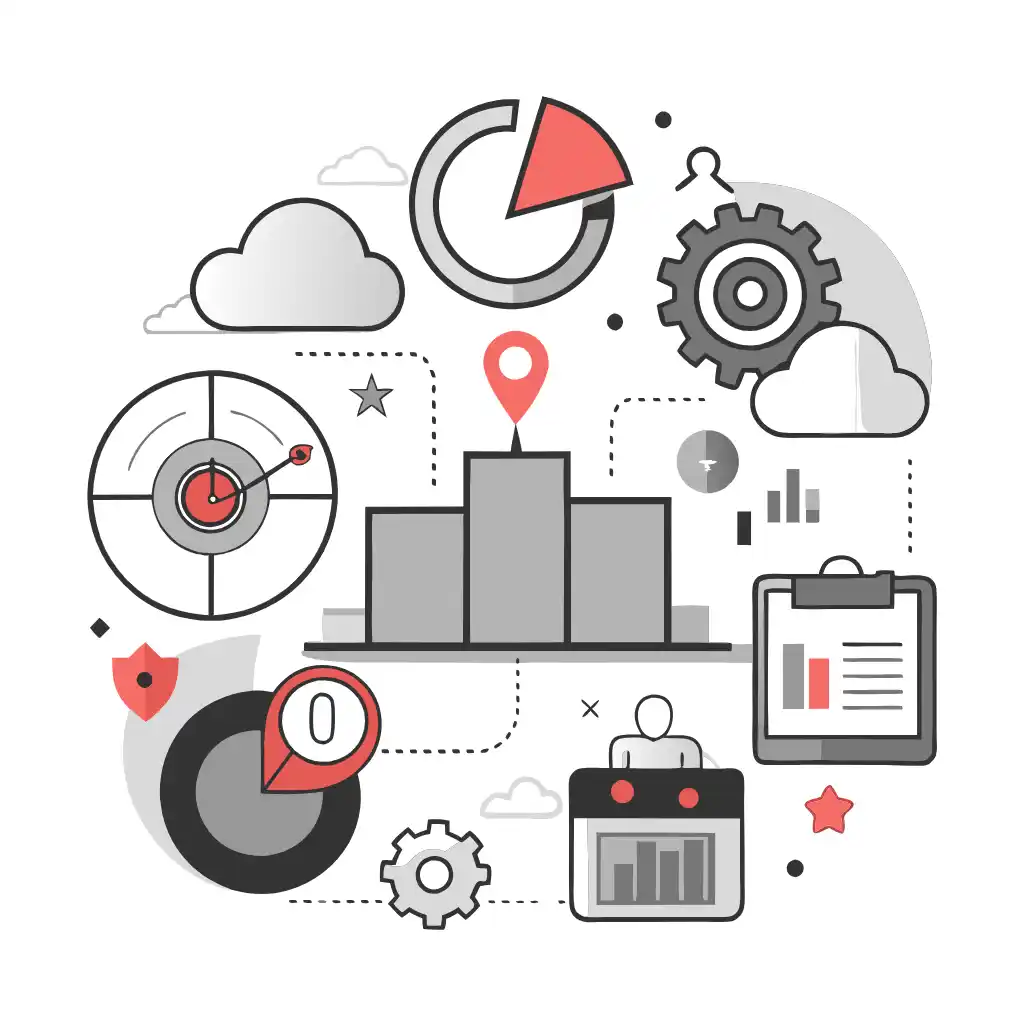Mastering Post-Editing of Machine Translations with ConveyThis
Balancing Automation and Expertise in Modern Translations
The progress of automated translation has been astounding. Early iterations, often the source of awkward outputs and comedic viral moments, have given way to a more refined, trustworthy system. With a steady influx of data to analyze and learn from, these digital translators have considerably enhanced their capabilities, even enabling effective multi-language website translations without significant financial outlay. However, can it supersede human translation?
The nuanced quality offered by human translators still outshines its machine counterparts. The native fluency, cultural understanding, and linguistic subtleties gained from a lifetime of language immersion are areas where automation has yet to compete effectively. This is why the process of post-editing automated translations—melding digital efficiency with human expertise—is a vital step in ensuring optimal translation quality. This hybrid method ensures machine outputs are polished and accurate, embodying the best aspects of both human insight and automated speed.


Balancing Automation and Expertise in Modern Translations
In the realm of language translation, the marriage between technology’s speed and human’s linguistic prowess has birthed a strategy known as post-editing automated translations (PEAT). This method amalgamates the dexterity of neural automated translations (NAT) and the linguistic finesse of a native language expert to fine-tune machine-rendered translations, ensuring the highest degree of precision and authenticity.
The narrative of automated translations has been significantly rewritten courtesy of the tremendous strides in artificial intelligence. Yet, despite its leaps, the technology remains susceptible to occasional missteps, particularly when dealing with nuanced linguistic elements such as idiomatic expressions. Here, post-editing serves as the crucial bridge, optimizing the translated content to maintain its soul and contextual relevance in the target languages.
Unraveling the journey of PEAT in the translation process reveals an intriguing itinerary. Following the maiden voyage, wherein an AI-powered apparatus undertakes the task of translating your website content, the baton is handed to the post-editors. Armed with linguistic proficiency, they meticulously examine the translated output, making necessary corrections and alterations to ensure that the true essence of the language, its subtle nuances, voice, and tone are upheld.
Embarking on the PEAT expedition is rendered seamless with a dedicated translation management dashboard. It provides two robust avenues for undertaking edits — through a Translations List or Visual Editor. While the former offers a systematic record for tracking changes, the latter provides a live preview of your website, enabling direct on-site modifications. To cater to varying needs, the dashboard even provides the convenience of ordering professional translations, thereby ensuring your content remains in sync with your diverse global audience.
The Unseen Edge: Mastering the Art of Post-Editing in Machine Translations
The first step in the translation journey employs tools like Google Translate or DeepL, promptly delivering raw machine translations (MT). This instant approach has a knack for efficiently handling high volume content that requires less stylistic flair, like technical manuals or quick word checks. It’s also handy to see how translated content impacts your site’s layout due to text expansion or contraction.
However, when your content is meant to influence, like on your website or promotional materials, an extra layer of polishing becomes crucial. Enter the realm of post-editing machine translation (PEMT).
Why is PEMT indispensable? Two versions of PEMT exist: comprehensive and light. Comprehensive PEMT is an exhaustive check to maintain the consistency of your voice, requiring more time but proving beneficial for high-traffic content. Conversely, light PEMT quickly identifies glaring mistakes like misspellings, inappropriate word usage, or missing punctuation. It’s a swifter process but less thorough than its comprehensive counterpart.
Why does PEMT matter? Here’s why:
Resource Saving: PEMT refines MT results without hefty investments of time or money. The improved quality of MT tools means you might not need extensive edits, making PEMT an affordable option, especially when you have in-house linguists or use translation management systems offering post-editing services.
Efficiency: Large translation tasks become manageable with PEMT. MT tools promptly fix obvious errors, leaving only minimal manual intervention needed for refining the output. Modern strides in NMT make the translation process smoother by handling the major tasks.
Enhanced Output: PEMT instantly elevates the quality of the target text, making it consumer-ready. It signals the customers that thought and effort have been invested into your website’s translated version, distinguishing it from purely machine-generated translations. This makes PEMT instrumental in connecting with your audience effectively.

Hybrid Translation Approach: The Power of Combining AI Speed with Human Expertise
The strength and subtlety of a native speaker’s touch in language translation is undeniable. They effortlessly navigate the intricate layers of language, comprehending the delicate shades, disparities, and peculiarities that a machine may fail to grasp. However, the impeccable quality delivered by humans comes with a price, both in time and monetary terms. The process can be drawn-out, extending into months based on the quantity of text awaiting translation.
This is where post-editing of machine translations emerges as a robust solution, striking a perfect balance. This technique merges the swiftness and productivity of automated translations with the linguistic finesse of a native speaker, resulting in translations of superior quality. This approach does not necessitate putting your endeavors on hold for an extended period awaiting numerous translations.
With this innovative method, you can expediently proceed with your plans while ensuring the content you present to your audience has been fine-tuned by the discerning eye of an expert. A dual-edged sword, this hybrid translation strategy ensures you do not compromise on speed or quality, providing the ultimate solution for your multilingual needs.
Harnessing Automated Language Translations: A Comprehensive Strategy
Optimizing Machine-Assisted Translation Post-Editing (MATPE) necessitates adopting certain strategies.
Ensure that the initial translation has superior quality. Different tools have varying efficiencies, with specific language combinations performing better with certain tools. As an example, English-Spanish transmutations rank higher with DeepL, while German-English pairings excel with Google Translate. An accurate initial translation simplifies the subsequent refinement process.
Choose an automated website translation tool. Incorporating a translation engine like Google Translate API is an option, though translation management software can streamline tasks significantly. A well-selected software can autonomously designate the top-performing translation engine to the appropriate language combination.
Use translation dictionaries to simplify tasks. These reference resources store your manual translation alterations and apply them across all your projects.
Recognize typical machine translation errors. AI-driven translation tools will provide precise translations, but being aware of common oversights in the raw result is crucial. These can include misplaced or absent articles, incorrectly translated terms, added or omitted words, erroneous punctuation, gender, capitalization, formatting, or word order, and untranslated terms in the original language.
Establish a consistent brand voice. Whether you have an internal team or utilize translation services, centralize your editorial guidelines for easy reference. Defining your brand style, such as your preferred tone, sentence count per paragraph, whether numbers are written as numerals, and stance on Oxford commas, can make the process less daunting.
While it’s essential to aim for translation accuracy, don’t get lost in perfectionism. Focus on maintaining the original text’s meaning and removing inappropriate translations. Remember, reducing manual tasks is key!
Be careful with idioms and phrases that might seem strange or be completely mistranslated in another language.
Finally, perform a final check before publication. Your translation management system will often spot clear errors, but a final sweep can catch any overlooked typos or misspellings.
Translation, far more than just knowing languages, is a complex process.
By following our tips and using ConveyThis , your translated pages will resonate with your audience, feeling native to the target language.
While it demands effort, the result is rewarding. If you’re translating a website, ConveyThis can save you hours with automated machine translation.
Try ConveyThis free for 3 days!
 No card details
No card details